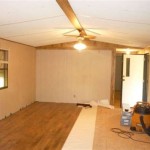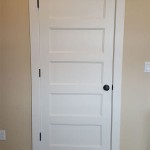How Much Does Painting House Interior Cost?
Determining the cost of painting a house interior is a multifaceted process, influenced by a range of factors that can significantly impact the final price. Homeowners seeking to refresh their living spaces or prepare a property for sale often find themselves navigating a complex landscape of estimates, materials, and labor considerations. Understanding the key elements involved in calculating interior painting costs is crucial for budgeting accurately and ensuring a satisfactory outcome.
The overall expense is rarely a simple, straightforward figure but rather a composite derived from the size of the area to be painted, the type and quality of paint used, the complexity of the job, and the prevailing labor rates in the region. Further influencing the cost are factors like the condition of the walls, the need for patching or repairs, and any specialized finishes or techniques requested. A comprehensive understanding of these variables empowers homeowners to engage in informed discussions with painting contractors, obtain realistic quotes, and make prudent decisions regarding their interior painting projects.
Surface Area and Room Size
The most immediate factor influencing the cost of interior painting is the sheer surface area that needs to be covered. This is typically measured in square feet and is calculated by multiplying the perimeter of the room by the height of the walls. Larger rooms naturally require more paint and more labor, translating to a higher overall cost. Beyond just the wall space, the surface area also includes ceilings, trim (including baseboards, door frames, and window casings), and any other features that require painting. Each of these elements contributes to the total amount of paint and labor needed, adding to the overall expense.
However, the relationship between square footage and cost isn't always linear. Smaller rooms might have more intricate details, such as numerous windows or doors, which can increase the labor time required. High ceilings, while adding to the total square footage, also present a challenge for painters, potentially necessitating the use of ladders or scaffolding and consequently, increasing the labor cost. Similarly, unusually shaped rooms or those with architectural complexities can require more precise cutting-in and attention to detail, further impacting the price. Therefore, a meticulous assessment of the room's dimensions and features is essential for obtaining an accurate estimate.
Furthermore, the number of rooms being painted plays a critical role. Painting an entire house interior will invariably involve a larger investment compared to painting just a single room. Contractors may offer discounts for larger projects, but the sheer volume of work will still contribute significantly to the overall cost. Homeowners should carefully consider the scope of their project and prioritize which areas they want to address based on their budgetary constraints.
Paint Type and Quality
The choice of paint significantly impacts both the cost and the final appearance and longevity of the painted surfaces. Paints are available in a wide range of qualities, from budget-friendly options to premium brands with enhanced durability, coverage, and color retention. Lower-quality paints typically require more coats to achieve adequate coverage, potentially offsetting any initial savings in material costs with increased labor expenses. They may also be less resistant to wear and tear, requiring more frequent repainting in the long run.
Premium paints, on the other hand, often offer superior coverage, requiring fewer coats and resulting in a smoother, more uniform finish. They are also typically more durable, resistant to staining, and washable, making them a worthwhile investment for high-traffic areas like hallways and kitchens. While the initial cost of premium paints may be higher, their longevity and enhanced performance can often justify the expense over time. Additionally, premium paints often offer better color consistency and resistance to fading, ensuring that the painted surfaces maintain their vibrancy for longer.
Beyond the quality of the paint, the type of paint also influences the cost. Different paint types are designed for specific purposes and surfaces. For example, primers are used to prepare surfaces for painting, improve adhesion, and block stains. Specialty paints, such as mildew-resistant paints for bathrooms or stain-blocking paints for kitchens, may be required to address specific challenges. Furthermore, different sheens, such as flat, eggshell, satin, semi-gloss, and gloss, offer varying degrees of durability and reflectivity, impacting both the aesthetic appeal and the cost. Flat paints are generally the least expensive but are less durable and harder to clean, while gloss paints are the most durable and easiest to clean but can highlight imperfections in the surface. The selection of the appropriate paint type and sheen is crucial for achieving a durable and visually appealing finish.
Labor Costs and Project Complexity
Labor costs constitute a significant portion of the overall expense of interior painting. Labor rates vary depending on the location, the experience of the painters, and the complexity of the job. Areas with a higher cost of living typically have higher labor rates. Experienced painters with a proven track record of quality workmanship and attention to detail generally command higher fees than less experienced or unlicensed contractors. While it may be tempting to opt for the lowest bid, it's essential to consider the potential risks associated with inexperienced painters, such as subpar workmanship, delays, and inadequate preparation.
The complexity of the project also significantly impacts labor costs. Jobs that require extensive preparation, such as patching holes, repairing cracks, sanding rough surfaces, or removing wallpaper, will inevitably require more labor hours and increase the overall cost. Similarly, painting intricate trim or ceilings, cutting-in around windows and doors, or applying specialized finishes like faux painting or textured coatings can add to the labor expense. Projects that require moving furniture, protecting floors, or masking off areas also contribute to the labor time. Therefore, a thorough assessment of the scope of work and the level of preparation required is crucial for obtaining an accurate estimate.
Furthermore, the number of coats of paint required can also impact labor costs. Applying multiple coats of paint requires more time and effort, increasing the overall labor expense. This is particularly true when painting over dark colors or when using lower-quality paints that don't provide adequate coverage in a single coat. Contractors typically charge by the hour or by the job, so the more time required to complete the project, the higher the overall cost will be. Ultimately, the labor cost is a function of the time and skill required to complete the project to a satisfactory standard.
The condition of the walls is a primary determinant of labor cost. Walls in poor condition may require extensive preparation before painting, including patching holes, repairing cracks, sanding, and priming. This adds significantly to the labor time and material costs. Walls with existing wallpaper may require professional wallpaper removal, which is a labor-intensive and often costly process. Even walls with a smooth surface may require cleaning and priming to ensure proper paint adhesion. The presence of mold or mildew can also necessitate specialized cleaning and treatment before painting, further increasing the cost. Therefore, a thorough assessment of the wall condition is essential for determining the amount of preparation required and the associated labor costs.
Accessibility also influences labor costs. Rooms with high ceilings or difficult-to-reach areas may require the use of ladders, scaffolding, or specialized equipment, which can slow down the painting process and increase labor time. Tight spaces or rooms with limited access can also be more challenging to paint, requiring more meticulous work and increasing the time required. Obstacles such as built-in shelving or intricate architectural details can also add to the complexity of the job and increase labor costs. Therefore, the accessibility of the areas to be painted is a significant factor in determining the overall labor expense.

Cost Of Painting A House Interior Comprehensive Guide

Cost To Paint A House Whole Painting Fixr

How Much Does It Cost To Paint The Interior Of A House In Paintrite Pros

How Much Does It Cost To Paint The Interior Of A House In Paintrite Pros

How Much Does Interior House Painting Cost A New Leaf

How Much Does Interior Painting Cost Castle Complements

How Much Does Interior House Painting Cost In 2024 Forbes Home

Cost Of Painting Your Home Per Sq Ft In 2024 Detailed Guide

Cost To Paint The Interior Of A House In 2024

Cost To Paint Interior Of House Kind Home Solutions
Related Posts








